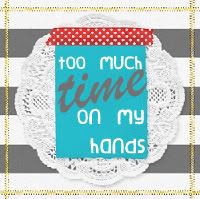"Motivate kids to start and finish spring cleaning before baseball and softball season start, with a chore chart that also serves up rewards. Savvy moms know a simple reward system may not be interesting enough to capture the imaginations of kids who can handle more complex reward systems. Create a chart based on points levels, using color coding. Make a scoreboard to determine which person will be named a winner, the spring cleaning champ. A spring cleaning chore chart can be the ultimate game your family plays this spring.
1. Brainstorm a list of spring chores. The master list will be your guide to creating the chores on chart for spring. You may want to save a copy of the list for fall.
- Separate the list into indoor chores and outdoor chores. Save the outdoor chores for teens or for a family team which includes a parent and a young child or a teen and a child.
- Break down each chore into doable projects, based on time available and the ages of everyone in your family. Preschoolers can carry small items from room to room, clean small items and sweep. School-aged children can help with laundry and organize things.
- Write each chore down on an index card or piece of construction paper. Engage the interest of younger children by including quick drawings related to the chore.
2. Score the chores by color coding them.
- Divide the cleaning chores into piles of easy, moderate and difficult. You can use a crayon, a highlighter or colored star stickers to keep track of the difficulty levels on each index card. Shaking the rugs outside might be considered a moderately hard job, where wiping down all of the kitchen table chairs could be a hard job.
- Consider the ages of your children and how long the task will take them (not you) when determining the difficulty level.
-Don't stress about it, because if a job proves to be harder than you thought, you can always upgrade the level.
3. Assign a point value to each level.
- The point value system could be as simple as one, two, three. For kids in kindergarten and elementary school consider using a a point system counting by fives or tens.
- Again, you can re-evaluate the point system as you go, to keep the rewards on par with the jobs.
4. Design a set of badges.
- Kids love badges. Reward kids a badge for each level achieved. Give the badges fun names like "Quickest cleaner in the house," "Speedster cleaner" or "Lightning McClean."
5. Make a rewards list. Write up a list of rewards for each point range. Level 1 could be for one to 10 points, Level 2 for 11 to 20 points and Level 3 for 21 to 30 points. Adjust the levels to match the number of chores you have, making sure each family member has the opportunity to level up.
The reward list could include simple rewards including
- Pick dessert night
- Your choice for movie night
- One new DVD or CD
- One extra hour of computer time
- One extra hour of video game time
- An afternoon of bowling
- Kid's choice for dinner
6. Give kids a voice. Post the chores on a bulletin board or place them on a table. Let kids choose which chores they want to, after you explain the points system.
7. Keep score. Keep track of points for finished chores by posting the running tallies on a chalkboard or dry erase board. For younger kids, draw a large oval and make small cars with their names on them, advancing them on racetrack as the complete the cleaning tasks.
8. Hide a chore buster and free point cards. Be sure to let kids know you've hidden a chore buster somewhere in the area where they need to clean. If they find the chore buster, mom or dad have to finish the chore but they still get the points. Also hide a couple of index cards with free points, to make spring cleaning have the same fun element as an Easter Egg hunt or treasure hunt.
The points system and chore chart may be elaborate, but the make spring cleaning day a lot more fun than just barking out orders at the kids."
Sources: Yahoo, Pam Gaulin














No comments:
Post a Comment